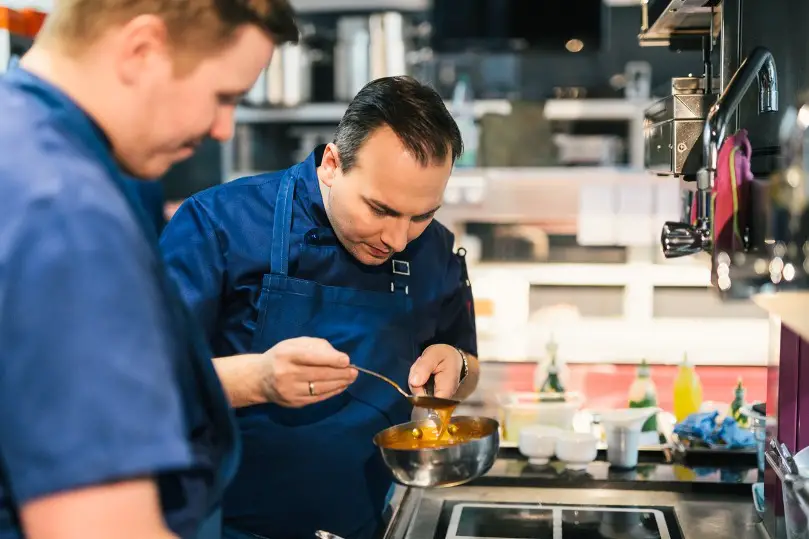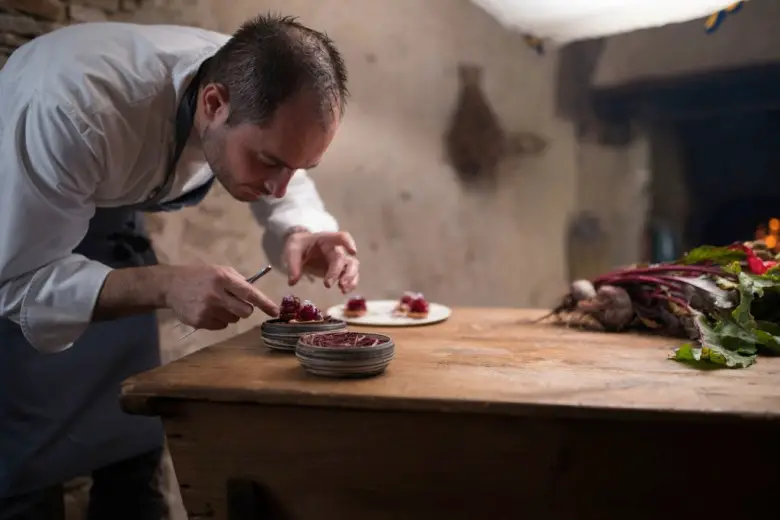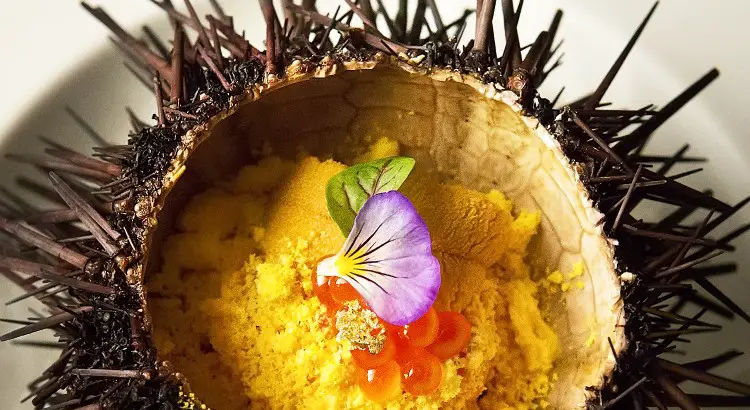As a self-identified foodie, I must admit to being a fan of “Chopped” and “Cupcake Wars” that play on a never-ending loop on the Food Network.
Still, I always believed that the shows were missing something. My quest for perfect-food-show salvation was nearly completed with my discovery of “The Great British Bake Off,” but even the polite delight of competitive British bakers cannot be truly considered a work of art. I trudged on with my quest, watching different food shows and feeling as hopeless as my lifeless dining hall salad.
Then, I discovered “Chef’s Table.” I fell in love with the series at the very first episode about Massimo Bottura. Bottura’s passion and obsession for creating stories through his food was tangible from my computer screen. The show manages to capture the unapologetic selves of the chefs through interviews with the chefs themselves, those close to them and established critics.
Season three of Netflix’s documentary series “Chef’s Table” continues with the same momentum that the first two seasons built. Each of the six episodes is bursting with fresh ideas on what it means to create rule-bending stories of grit and the personal lives of six amazing chefs.
The creator, David Gelb, spectacularly blends the stories and personalities of the humans behind the counter and the beauty of the dishes served. The camera shots of the chefs’ dishes are stunning, and so clear that I am always tempted to physically grab the dish from the screen. (Unfortunately, Netflix has yet to figure out how to actually deliver the meals to me.) You can almost hear the crunch of the crust of Nancy Silverton’s bread and taste the umami of Ivan Orkin’s ramen. One tip: Never watch on an empty stomach.
These beautiful images of the creation of a dish are strengthened by the intense focus the show pays to the chefs’ stories. “Chef’s Table” does a beautiful job of demonstrating that a chef’s food is about more than a pleasing aesthetic; the food is an art, cultivated from a place deep inside of each person.
Take, for example, the story of chef Tim Raue from Berlin. Raue was raised in a rough part of Berlin by an abusive father. As a teenager, he became involved in a violent street gang. The unstable track he was on shifted when Raue was presented with three potential career options (a typical process in German high schools), and chose chef. During his career, Raue tried to create the fine French food he had learned about in culinary school. He was doing well as a chef, but something was missing.

After his first trip to Singapore, Raue fell in love with Asian food, describing the experience as “from nothing to paradise.” He returned to Berlin, and embraced Asian fine dining, completely changing his restaurant and ignoring the advice of those who said it could never be successful in Berlin. Raue says, “I was able to control this bad energy and turn it into something which is beautiful.”
The show is important to watch for anyone interested in the ever-changing atmosphere of what fine cuisine means. The creators featured on “Chef’s Table” are innovative rule-breakers who refuse to stick to the standard ideas of French cooking as the only way to achieve great food. Thus, the third season emphasizes the importance of ingredients that can speak for themselves, and food that will nourish the soul.
The classical music of the show is also a keystone element to the beauty that is “Chef’s Table.” Creator Gelb’s father is the general manager of New York’s Metropolitan Opera, and the influence of the power of music was certainly not lost on his son. The music belies the sense of intensity and obsession that underlies each chef’s story.
Yes, the melodies play in the background, but somehow the music is also always at the forefront. At the beginning of Nancy Silverton’s episode, her frantic desire to produce the perfect bread is mirrored in the intensity of the music. Likewise, as Jeong Kwan tenderly creates her pickled lotus blossom, the music reflects the calm and tranquil sense of her temple food.

The home base for the show is Netflix, which I think has made a positive impact on the ability of the show to reach a broader audience. Maybe a bored 15-year-old would not actively go out of his/her way to track down a six-episode documentary series on global chefs. However, with the ease of Netflix, more people are watching, and subsequently thinking about the food they are eating.
The show’s popularity can even be seen in a recent Portlandia sketch, in which Fred Armisen opens up an airport sushi restaurant in one of Portland’s trendy dining neighborhoods. The familiar music of “Chef’s Table” plays as Armisen presents his dish “Edamame in Styrofoam.” The sketch certainly mocks the intensity of the show, and even I (avid fan of “Chef’s Table”) laughed loudly.
Watching a 45-minute documentary on the life and food of a chef might seem mundane to some, but “Chef’s Table” is so finely produced and filmed that I believe anyone could easily become entranced. Watch the episode on Peruvian chef Virgilio Martínez, who is reminiscent of an ancient explorer, discovering new and unused ingredients to create something completely innovative. Watch Vladimir Muhkin in his battle to define what Russian cuisine is.
Watch Nancy Silverton, Tim Raue, Ivan Orkin and Jeong Kwan negotiate their own personal desires and passions to find their own version of culinary success. Whichever episode you choose will inspire you to find something you love to do and can’t live without, work hard and go eat something truly delicious.

















